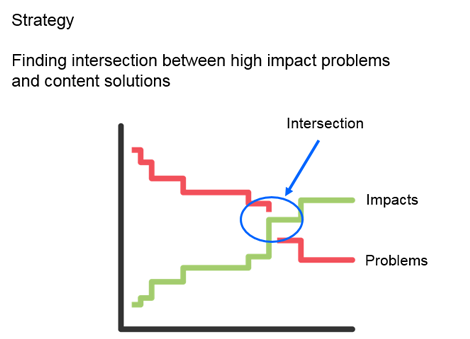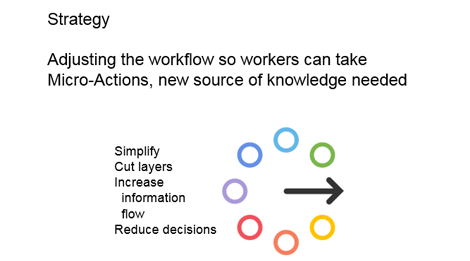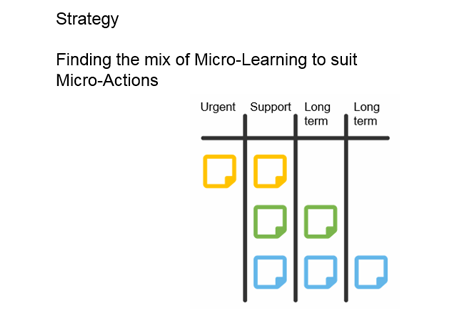In my interactions with instructional designers, one thing always stood out: They have a tendency to provide a lot of content. Their mindset is: “Learners need to know all the steps since they may not do it correctly.”
However, my observation has led me to believe that learners don’t need all of that content. Workers only want information that can help them address a specific issue or problem in the workplace.
For trainers and designers, this means a shift in how we should view learning and content. From “all content is important,” I propose we should focus on learning that helps learners perform their jobs.
Focus on Micro-Actions
Micro-actions are very specific actions that learners do which result in improving their performance. This could include solving a problem or fixing an issue. They don’t offer a very encompassing solution; instead, micro-actions are more of very small complete loops that focus on quick action, not necessarily on content.
Micro-actions work because they address two very important issues. First, micro-actions provide operations people with quick and effective solutions instead of time-consuming and resource-intensive training programs. Second, they don’t drown learners in content — what I like to call “data dumps.”
Step 1: Find an Intersection

What are the problem areas and what are the biggest impact areas? These operational questions are critical in identifying pain points, which determine what we need to train workers on.
There are many ways to find the intersection of impacts and problems. Some of these methods include:
| |
Interview of key operations people | |||
| |
Constantly ask them to develop feedback or survey of problems | |||
| |
Go watch people do their jobs | |||
| |
Ask people doing their jobs what their issues are | |||
| |
Customer/user survey — ask users, customers | |||
| |
A poll | |||
| |
Work surveys | |||
| |
Alternative solutions | |||
| |
Look for the pain points | |||
| |
Solutions from other disciplines | |||
| |
Ask the audience what good looks like and contrast with current state | |||
| |
Conversations | |||
| |
Focus groups |
In this first step, our goal is to constantly listen, to feel and to observe.
Step 2: Simplify

After finding the intersection, we need to simplify and adjust the workflow accordingly. We do this by asking learners about their actions and challenging these. Ask the following process questions:
| |
What can we simplify? | |||
| |
What layers can we cut? | |||
| |
How can we improve the flow of information? Or, what information can you improve on? | |||
| |
How can we reduce the number of decisions learners have to make? |
Step 3: Help Learners Solve a Problem

Step 3 refers to critical, must-know content that are useful to learners and delivered at just the exact time to help them achieve the desired end results. They are basically answers that impact the “urgent,” show proof of learners’ work or shared experiences which result in a change in attitude and behavior. Typically, content can come as various forms of very short answers to on-the-job demands, such as:
| |
Job aid | |||
| |
FAQ | |||
| |
Tips and tricks | |||
| |
Cheat sheet | |||
| |
Interactive PDF | |||
| |
Checklist |
Conclusion
Trainers and designers have to let go of the need to know everything which only results in data dumps on learners. Instead, I propose that trainers and designers should stop thinking “all content is important” but focus instead on helping workers learn and perform in the workplace.
References
Strategic Microlearning: Making Training Initiatives Keep Pace with Rapid Workflow
Tip #48 – Stop That Dump Truck! Ask Questions to Know What is Important for Learners
Tip #60 – Letting Go of the Need to Know Everything: Use Context Setting Learning Objectives
Tip #92 – The SMEs’ Fault – They Think That All Content Is Important
Tip #124 – Are Instructional Designers Incapable of Microlearning Design?
Ray Jimenez, PhD
Vignettes Learning
“Helping Learners Learn Their Way”

